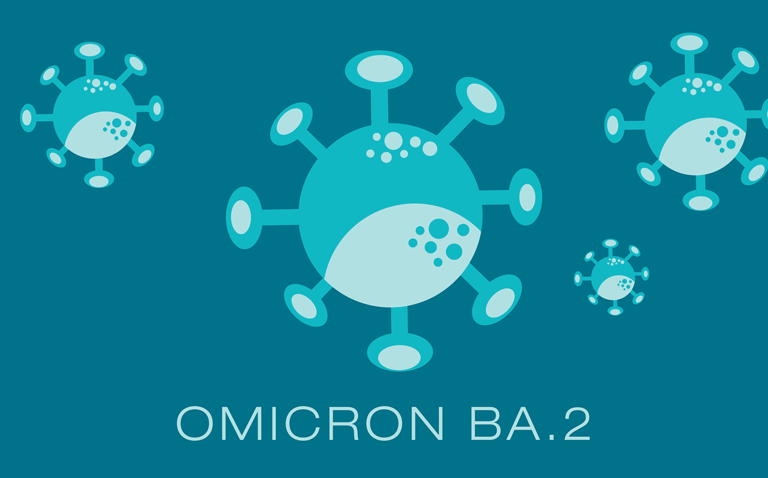A study has suggested that COVID-19 variants may be weakening with Omicron BA.2 giving rise to less severe infections that other variants
With Omicron BA.2 (OBA2) giving rise to less severe infections, it is possible, suggests US researchers, that the COVID-19 virus is mutating to become milder.
In a study covering the period from October to December 2021 in South African, researchers concluded that infection with the Omicron COVID-19 variant led to a significantly reduced odds of hospitalisation. In fact, this was not an isolated finding and a Canadian study with 9,087 cases of Omicron, also found that infection with the variant was less severe. But as the virus mutated, an assessment of the severity of infections with one variant, OBA2, has produced conflicting results. For instance, one study found that all the Omicron variants investigated (including Omicron BA.2) led to a less severe infection compared to the Delta variant. In contrast, a French study showed that patients infected with the OBA2 variant were significantly more likely to be hospitalised and that the BA.2 variant was an independent risk factor for hospitalisation.
This led the US researchers to undertake a large, retrospective analysis of the severity of infection with the Omicron BA.2 lineage. They used data held within both inpatient and outpatient systems in New England and identified individuals infected with the Delta, Omicron B.1.1.529 and the Omicron BA.2 variants. Though genomic sequencing was not performed, infections were categorised as either Delta, Omicron or Omicron sub-variants according to the timing of the onset of disease detection. For example, infections between June and December 2021 were classed as Delta and cases between March and May 2022 as the Omicron BA.2 variant. The researchers included vaccination status, ethnicity and co-morbidities as covariates in their analysis and set the primary outcome as in-hospital death within 30 days of a positive COVID-19 test result. They also considered the need for invasive ventilation and intensive care unit admission as secondary outcomes.
Omicron BA.2 and COVID-19 outcomes
A total of 102,315 confirmed COVID-19 infections in patients with a mean age of 44.2 years (62% female) were included and of whom, 28,940 were classed as OBA2 and 65.9% of these individuals had been fully vaccinated and had a booster, compared to only 2.6% of those infected with the Delta variant.
The mortality rates were 0.7%, 0.4% and 0.3% for the Delta, Omicron and OB2 variants respectively. After adjustment for covariates, the risk of the primary outcome (i.e., mortality) was significantly higher for those infected with the Delta variant compared to OBA2, (Odds ratio, OR = 2.07, 95% CI 1.04 – 4.10) and for the original Omicron strain (OR = 2.20, 95% CI 1.56 – 3.11).
In subgroup analysis, there were also higher risks of hospitalisation, intensive care admissions and the need for mechanical ventilation, for Delta and original Omicron infections compared to OBA2.
The authors concluded that after having accounted for a variety of confounding factors, it seemed that the Omicron BA.2 sub-variant was intrinsically less severe than other variants.
Citation
Strasser ZH et al. Estimates of SARS-CoV-2 Omicron BA.2 Subvariant Severity in New England JAMA Netw Open 2022










